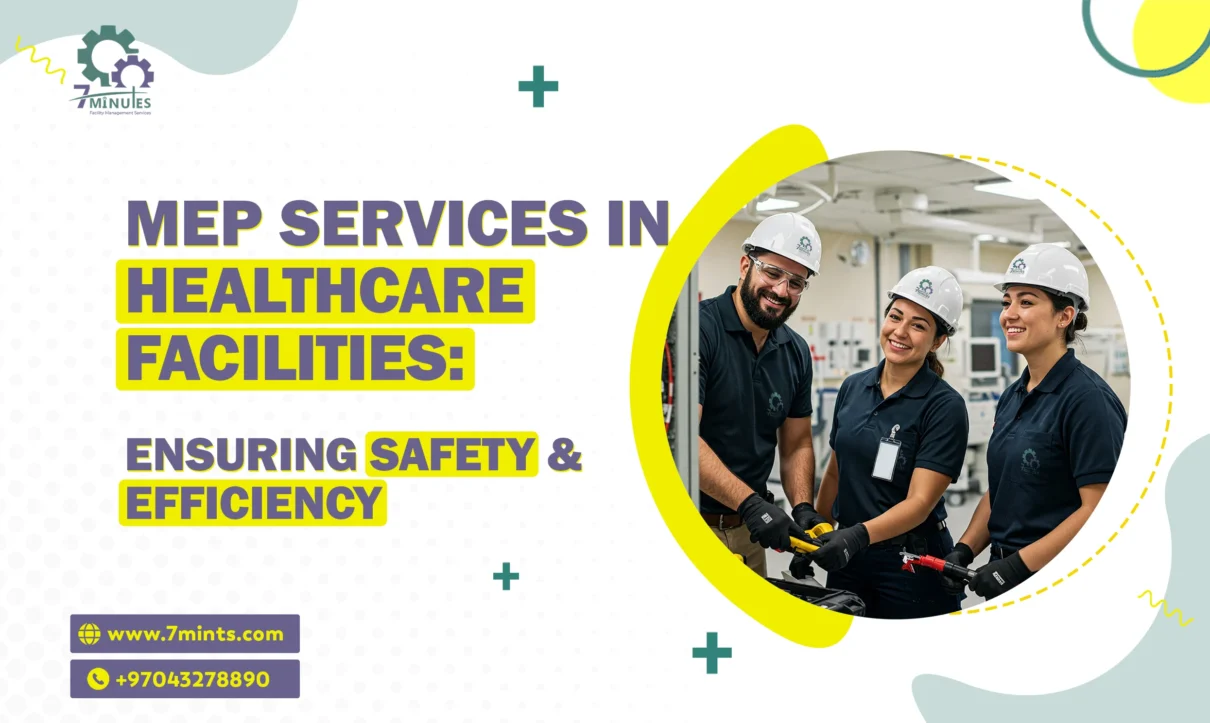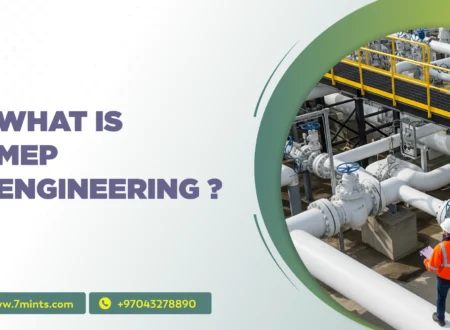Modern-day healthcare facilities are still ranked among the most complex among modern-day structures in their design and operation. This is coupled with the several different regulatory demands that require these facilities to be available and to meet the functional requirements. The MEP will provide a large bodily system spine in these places in terms of safety, efficiency, and comfort for both patients and staff alike. In this blog, MEP services are discussed and how they play a critical role in healthcare projects in bringing operational excellence to the patients.
The Role of MEP Systems in Healthcare Facilities
Accuracy and reliability are the prerequisites for healthcare. Smooth-running hospitals are run by MEP systems with applications for infection control, energy efficiency, patient comfort, and emergency preparedness. Below are some of the primary applications of MEP systems in healthcare:
Mechanical System: HVAC (Heating, Ventilation, and Air Conditioning) systems, elevators, escalators, and medical gas supply systems.
Electrical System: Power distribution, emergency backup systems, lighting, and interfacing with medical equipment.
Plumbing: Water supply and drainage systems, pipelines for medical gases, and sterilization systems.
These are some of the major parts necessary for safe and efficient healthcare operations.
Mechanical Systems: Powering a Healing Environment
They form a very important part of the provision of a safe and, in many cases, comfortable environment for patients and staff. The generally accepted function of HVAC (heating, ventilation, and air conditioning) will provide adequate air quality by filtering the contaminants and controlling the humidity levels. Such a function becomes critical in special areas like operating theaters and specialists’ ICUs, where infection control becomes paramount.
Temperature control is also needed in many areas inside a hospital; for example, the laboratory also defines the temperature control of certain specified ranges by the FDA to provide integrity against contamination of sensitive samples. Finally, all of this goes without saying: the modern-day HVAC design maximizes the use of energy-efficient technologies to minimize operational costs and for the sake of sustainability in the healthcare setting.
1. HVAC Systems
The HVAC system is more than just a comfort feature; it is, in fact, directly related to patient outcomes. Air circulation and temperature control facilitate less airborne infection transmission. Advanced filtration systems can filter particulates, which may cause a lot of threats to patient health. Energy-efficient HVAC solutions are effective in reducing heating and cooling costs, with both clean outdoor air and no violation of environmental regulations.
2. Supply of Medical Gases
A medical gas supply system lays down the provision of gases and suction for patient care usage in hospitals. This pipeline will supply oxygen and nitrous oxide, which is direct to patient care locations.
Electrical Systems: Lifelines of a Healthcare Facility
Electrical systems are indeed the backbone of healthcare operations. A single incident of power failure can disrupt critical patient care services and endanger lives. Hospitals cannot withstand the brunt of such unfortunate circumstances, so hospital- and disaster-survival kits for patients must include electrical systems that will support ventilators, MRI machines, and so forth. Backup generators and Uninterruptible Power Supply (UPS) storage devices provide continuity during emergencies in most hospitals, allowing healthcare professionals to maintain the quality of their critical services.
1. Unbroken Power Supply
In a healthcare facility, time is gold and may mean the difference between life and death in emergencies; therefore, an unbroken power supply is imperative. The redundancy not only helps get out of the possible disasters but also strengthens the entire operational reliability of the hospital. Check out our latest blog post on Do-it-Yourself vs Professional Pest Control
2. Emergency Lighting
Good lighting design optimizes patient safety during a power blackout and allows medical procedures to proceed unhindered. During a power failure or emergency situation, the emergency lighting system will light critical areas, including hallways, stairwells, and operating rooms.
3. Energy Efficiency
Today’s electrical designs incorporate modern energy efficiency trends by developing a network with generator sets, and as much as possible, renewable sources such as solar panels or wind turbines are directly integrated into the building. Cognizant of the whole building’s energy consumption, advanced monitoring systems track their various energy-use patterns across the facility to optimize their performance and reduce waste.
Plumbing Systems-For Housed Hygiene and Reliability:
Most plumbing facilities go beyond just providing running water to an institution, including the provision of most of those aspects of hygiene dimensions that might be critical for patient safety. Reliable supply and pressure of running water is thus important for sterilization processes, for patient care activities such as bathing or wound cleaning, and general sanitation throughout the facility.
1. Clean Water Supply
Advanced filtration and disinfection technologies ensure that water meets health standards before any point of use within the facility. This minimizes the risk of hospital-acquired infections and protects patients.
2. Waste Management
An efficient drainage system is designed to accommodate large volumes of hospital-generated waste while preventing contamination risks through the installation of backflow prevention devices. Correct plumbing design ensures the disposal of hazardous waste without contaminating clean sources or creating environmental hazards.
3. Medical Gas Pipelines
Plumbing also involves the transport of medical gases down specialized pipelines built to match the highest safety standards. These pipelines need to be watched closely to guard against leakage and contamination that can endanger patients.
Fire Protection Systems
It is important in hospitals due to the nature of patients who may be in fragile conditions and the flammability of materials found in the hospital environment.
Fire detection systems provide an early warning through smoke detectors located throughout the facility.
These automatic sprinklers suppress flames while they are small, preventing the large-scale spread of fire.
Fire-rated construction materials provide safe egress while limiting fire exposure in patient areas.
MEP engineers design these systems to ensure compliance and to limit the key fire risk.
Integration with Building Management Systems (BMS)
These sophisticated systems integrate HVAC, electrical, plumbing, and fire protection components for real-time monitoring and effective management of all building operations.
Main benefits include:
Increased energy efficiency: Automated controls optimize the consumption of resources with real-time information.
Predictive maintenance: Predictive maintenance enables identifying issues by maintenance engineering before they turn into an expensive repair task.
Challenges for MEP Design in Healthcare
Designing MEP systems for healthcare institutions has its challenges, requiring careful considerations:
1. Infection Control
Infection control will be a priority where sick and compromised patients reside; therefore, the MEP designs must include features for minimizing infection risk. Active air movement by HEPA filters will considerably decrease the airborne pathogens’ turnover in the facility.
2. Resilience
MEP design should give due consideration to redundancy in pathways of power distribution and fail-safe operations of HVAC systems, ensuring uninterrupted service delivery under duress.
Case Study: MEP Engineering Enhancement for Efficiency
One big hospital project is enough to prove how effective MEP would be in terms of operational efficiency and productivity:
The electrical engineering provided a continuous capability of power supply for important equipment.
The plumbing designs were functional in sterilization and reduced waste generation through advanced methods of drainage.
Best Practices for Effective MEP Design
One of the best things to do for realistic performance in a health facility within the strict confines of safe standards is
Early Involvement: Bring in MEP consultants too early on in the planning process for them to be able to marry designs to facility objectives right from the outset.
Collaboration: Encourage teamwork between architects, engineers, contractors, operators, and medical personnel throughout every phase of a given operation or project, thereby designing holistic, user-targeted solutions.
Compliance: Complying not only with regulatory standards but also with industry best practices in safety performance metrics for installations.
Sustainability: Use energy-efficient technologies as much as possible in order to lower eventual impacts on the environment and increase yield over time savings from lower utility bills.
Regular Maintenance: Have regular maintenance checks done on all mechanical, electrical, and plumbing systems. This ensures that they are always up and running and prevents incurring repair costs later due to neglect or lack of regular maintenance checks.
Conclusion
MEP has gained more importance recently than ever, when it has attained an indispensable position in health facilities to ensure safety, efficiency, and mostly comfort. Contact us, as all these factors are being imposed by the very high and unprecedented pressures that society is putting on health facilities at large in the wake of multiple global disasters, which call for quick responses in delivering high-quality care to diverse populations served daily under these settings.










1 Comment
Comments are closed.